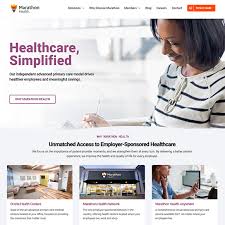lifetime fitness careers has experienced exponential growth over the past few decades, with increasing numbers of individuals seeking to lead healthier, more active lives. As a result, the demand for fitness professionals has surged, making it an exciting time to pursue a career in the field. lifetime fitness careers one of the most well-known names in the fitness industry, is leading the way in offering diverse and fulfilling career opportunities for those passionate about wellness, fitness, and making a positive impact in people’s lives. Whether you’re interested in personal training, group fitness, wellness coaching, or operations, Lifetime Fitness provides a variety of paths for growth and advancement.
Why Consider a Career at Lifetime Fitness?
lifetime fitness careers is not just a gym or fitness center; it’s a comprehensive wellness destination that combines fitness, nutrition, and relaxation in one space. For individuals passionate about promoting health and helping others achieve their wellness goals, a career with Lifetime Fitness offers numerous benefits:
1. A Holistic Approach to Wellness
Lifetime Fitness is known for its commitment to holistic wellness, offering services that go beyond traditional gym memberships. With a wide range of fitness programs, spa services, healthy dining options, and expert coaching, Lifetime Fitness emphasizes the importance of overall well-being. This holistic approach gives fitness professionals the opportunity to work with clients in a more comprehensive way, promoting mental, emotional, and physical health.
2. Career Growth and Development
Lifetime Fitness is dedicated to helping employees grow and advance in their careers. Whether you’re just starting out or already have experience in the fitness industry, Lifetime offers numerous pathways for growth. Through ongoing training, certifications, and leadership opportunities, you can continue to expand your knowledge and skills. Many employees find that Lifetime Fitness provides the resources and support to develop into management or corporate roles over time.
3. Passionate and Supportive Work Environment
Working at Lifetime Fitness means being part of a community that is truly dedicated to helping others improve their lives. The company fosters a supportive work environment where employees collaborate, learn from each other, and share the common goal of promoting wellness. This camaraderie can be incredibly motivating, both professionally and personally.
4. Comprehensive Benefits Package
Lifetime Fitness provides a competitive benefits package that includes health insurance, retirement savings options, and wellness programs for employees. Additionally, employees receive complimentary or discounted access to Lifetime Fitness clubs and fitness classes, which can be a significant perk for those passionate about fitness.
Top Careers in Lifetime Fitness
If you’re considering a career in the fitness industry, Lifetime Fitness offers a range of roles that allow you to pursue your passions while making a meaningful impact on others. Here are some of the top career opportunities:
1. Personal Trainer
Personal trainers are the backbone of fitness at Lifetime Fitness. They work one-on-one with clients to develop customized workout programs that align with their fitness goals, whether it’s weight loss, strength training, or injury recovery. Personal trainers at Lifetime Fitness help clients improve their physical health while offering motivation, support, and accountability.
- Skills Needed: A passion for fitness, strong communication skills, and an understanding of anatomy and exercise physiology.
- Career Growth: With certifications and experience, personal trainers can move into specialized roles such as strength coaches, group fitness instructors, or wellness coaches.
2. Group Fitness Instructor
Group fitness instructors lead energetic classes, guiding participants through various workouts such as yoga, Pilates, cycling, strength training, or high-intensity interval training (HIIT). They motivate groups, create an inclusive environment, and ensure that participants perform exercises safely and effectively.
- Skills Needed: Strong public speaking, high energy, and expertise in specific fitness disciplines.
- Career Growth: Group fitness instructors often expand into leadership positions, managing classes or even developing their own fitness programs.
3. Wellness Coach
Wellness coaches at Lifetime Fitness help individuals improve their overall well-being by addressing areas such as nutrition, stress management, sleep habits, and emotional health. These professionals guide clients toward sustainable lifestyle changes that promote lasting health benefits.
- Skills Needed: Knowledge of nutrition, mental health, and overall wellness, along with the ability to motivate and guide clients.
- Career Growth: Wellness coaches can specialize in specific areas such as nutrition coaching, mental health support, or sports psychology.
4. Fitness Manager or Director
For those who enjoy leadership roles, Lifetime Fitness offers career opportunities in fitness management. Fitness managers oversee the daily operations of a fitness center, including managing staff, developing new programs, ensuring member satisfaction, and maintaining a high standard of fitness equipment and facilities.
- Skills Needed: Strong leadership, organizational skills, and a deep understanding of the fitness industry.
- Career Growth: Fitness managers can advance to regional director or corporate-level roles overseeing multiple locations.
5. Aquatics Director or Instructor
If you’re passionate about swimming or water-based fitness, becoming an aquatics director or instructor is an excellent option. Lifetime Fitness offers aquatics programs ranging from swim lessons for children to water aerobics for seniors. Aquatics directors ensure that these programs run smoothly and safely.
- Skills Needed: Certification in lifeguarding or swim instruction, leadership skills, and a love for water-based fitness.
- Career Growth: Aquatics professionals may move into broader management roles or specialize in water safety and aquatic therapy.
6. Spa and Wellness Services
Lifetime Fitness also offers career paths in spa and wellness services, including massage therapy, skincare, and relaxation services. Employees in these roles help clients unwind, reduce stress, and recover from workouts.
- Skills Needed: Certifications and expertise in massage therapy, skin care, or other wellness-related fields.
- Career Growth: These professionals can expand into wellness leadership or training roles.
7. Nutritionist or Dietitian
As part of Lifetime Fitness’s holistic approach to wellness, nutritionists and dietitians provide clients with personalized meal plans, nutrition advice, and support in achieving their dietary goals. These professionals help individuals make informed food choices to improve energy levels, manage weight, or optimize athletic performance.
- Skills Needed: A degree in nutrition or dietetics, certification, and knowledge of healthy eating practices.
- Career Growth: Nutritionists can become senior health consultants or contribute to corporate wellness programs.
What Makes Lifetime Fitness Unique?
Aside from offering exciting career opportunities, Lifetime Fitness stands out for its comprehensive wellness model. Unlike other fitness organizations that may focus solely on gym memberships or personal training, Lifetime Fitness provides a full-service experience. This approach allows employees to specialize in a variety of areas and create meaningful, long-lasting relationships with clients.
Additionally, Lifetime Fitness is deeply committed to diversity and inclusion, ensuring that all employees feel valued and supported. The company’s culture emphasizes respect, teamwork, and professional development, creating an environment where employees can thrive both personally and professionally.
Final Thoughts
If you’re passionate about fitness, wellness, and helping others lead healthier lives, a career at Lifetime Fitness can be incredibly rewarding. With its wide range of opportunities, from personal training and wellness coaching to leadership roles in fitness management, Lifetime Fitness offers employees the chance to grow, develop, and make a real impact. As the demand for health and fitness professionals continues to rise, Lifetime Fitness remains a leader in offering career paths that align with both personal passions and long-term professional goals.
happy weekend everyone
pic.twitter.com/c7hVNoQYCv







 UK Kindness Schools' Ambassador (@KindnessCoach_)
UK Kindness Schools' Ambassador (@KindnessCoach_) 

 Super Top up in health insurance
Super Top up in health insurance
 on what is a super top-up plan and its benefits and limitations?
on what is a super top-up plan and its benefits and limitations?





 I took 2 scoops of bucked up pre workout and I didn’t feel the tingling until like 45 mins in my workout and even then it was barely anything
I took 2 scoops of bucked up pre workout and I didn’t feel the tingling until like 45 mins in my workout and even then it was barely anything
 anywayssss advice is welcomed like always!!
anywayssss advice is welcomed like always!!  (@nessaluvcougars)
(@nessaluvcougars) 
 (@bosstosin_)
(@bosstosin_)